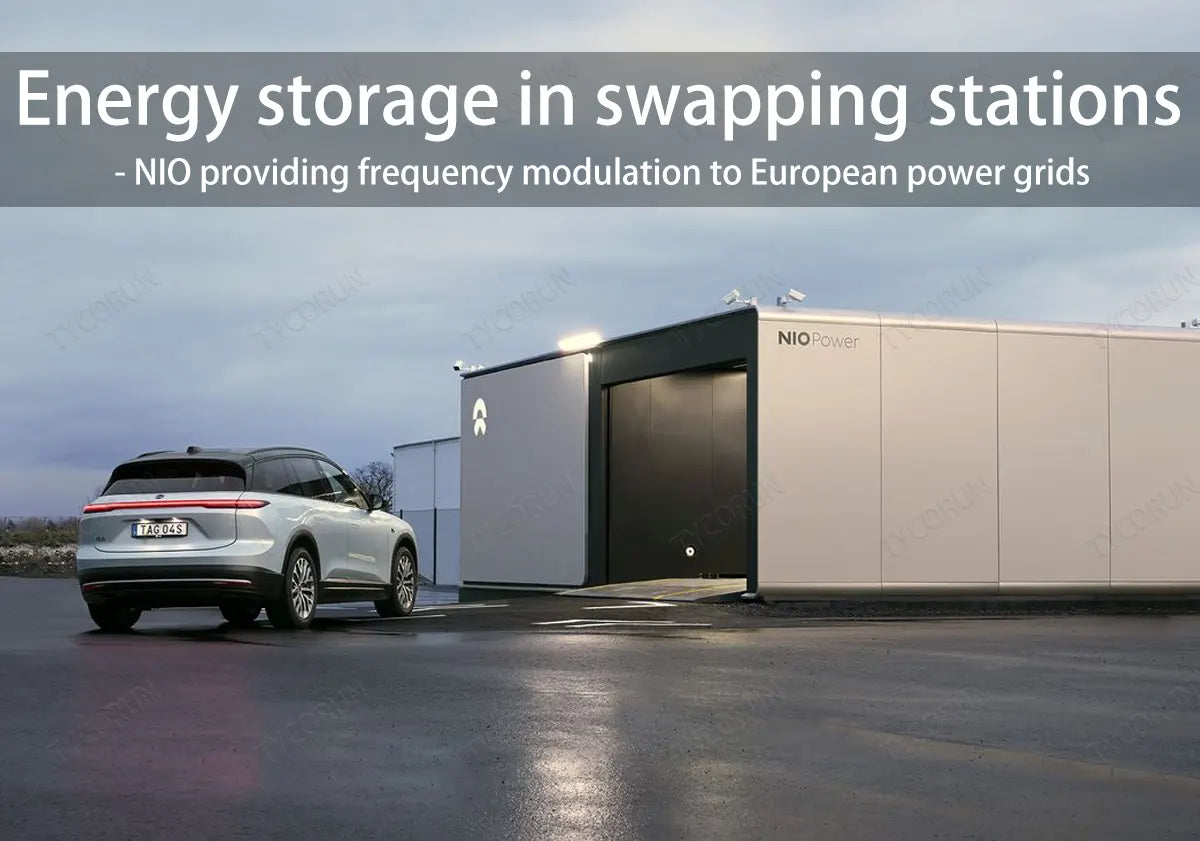
Recently, NIO Energy has successfully started providing frequency modulation services to the power grid in Europe. This is a big step for NIO Energy in the European market, and it is also an important step in the entire battery swapping business model and battery swapping technology.
This move marks that the battery swapping station participates in grid frequency regulation services as energy storage equipment and plays an active role in the stable operation of the grid. NIO vice president Shen Fei pointed out that their battery swapping station in Denmark has successfully started to provide frequency regulation services to the power grid, which is an important milestone for NIO Energy in the European market.
The battery swapping station can be used as an energy storage device to store energy when the electricity price is cheap or idle, and sell energy to the grid when it is expensive or busy. This can not only alleviate the problem of power supply shortage, but also create revenue. However, since battery swapping stations generally face problems such as peak periods and high charging demand, the needs of car owners must be prioritized.
It is worth noting that NIO is already exploring a similar project - off-peak charging. Charge more during low load periods (low electricity prices) on the grid, and charge less or even discharge during peak periods (high electricity prices). It is expected to save about 16 million to 20 million USD in electricity bills in a year.
Main content:
1. NIO charging technology
Here we will talk about NIO’s charging technology and the interaction between battery swapping and the power grid.
① Charging pile integrated with cabinet
NIO's 20 kW DC fast charger is much larger than the 7 kW charging pile. This is because the 20 kW DC fast charger integrates the charging cabinet for AC and DC conversion with the charging pile, so the volume will be much larger than a household charging pile that only has current switches and communications.
- The advantages of the charging pile integrated with cabinet are the small size and easy transportation. It can work smoothly as long as the electric capacity is sufficient.
- The disadvantage is that due to the power module and heat dissipation, the upper limit of charging power is not high. The upper limit of charging power is determined by the power module configured inside the charging cabinet. Excessive current will increase the temperature of the cable, causing the charging current to decrease, thereby reducing the charging rate.
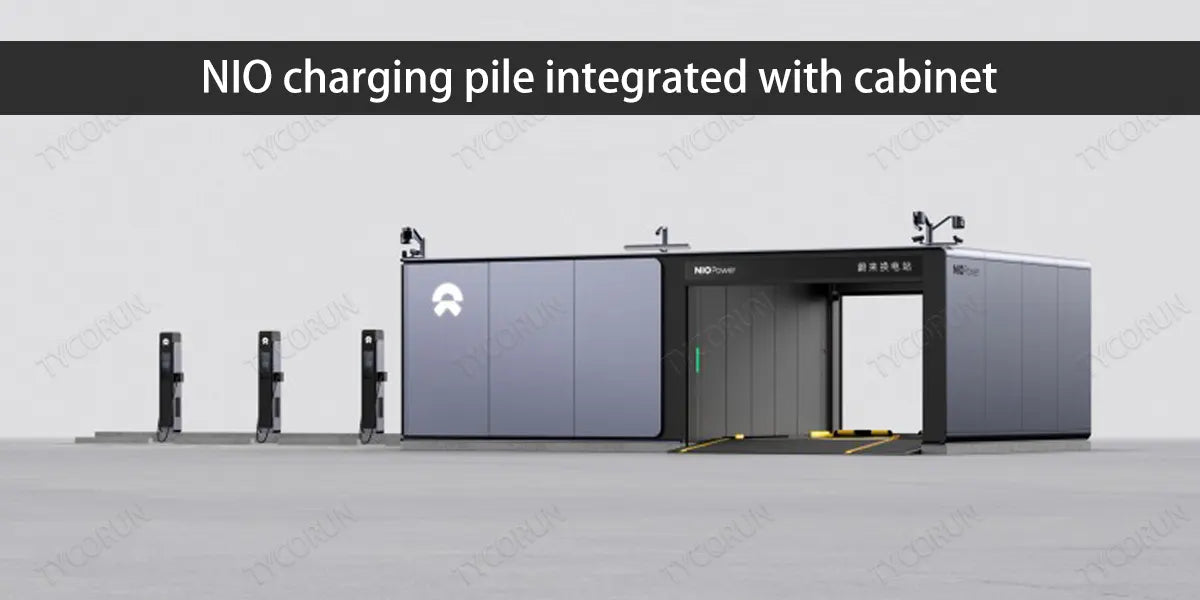
② Charging pile separated from cabinet
As the name suggests, the charging cabinet and charging pile are separated.
The high-voltage power is input into the charging cabinet through the transformer box, and the charging power is configured according to the needs of the charging gun. The status of the charging pile can be monitored in the cloud, making maintenance more convenient. The charging cabinet can determine how much charging power is needed and how many power modules are configured based on the site's electrical capacity and floor space, and the distance from the charging pile can be flexibly changed.
High-power fast charging mostly uses the type that separates the charging pile and the cabinet. High-power fast charging requires many power modules. When placed in the same cabinet, coupled with the heat dissipation requirements, the volume will be very large, sometimes as large as a container, so it is not suitable to use an integrated type of charging pile and cabinet.
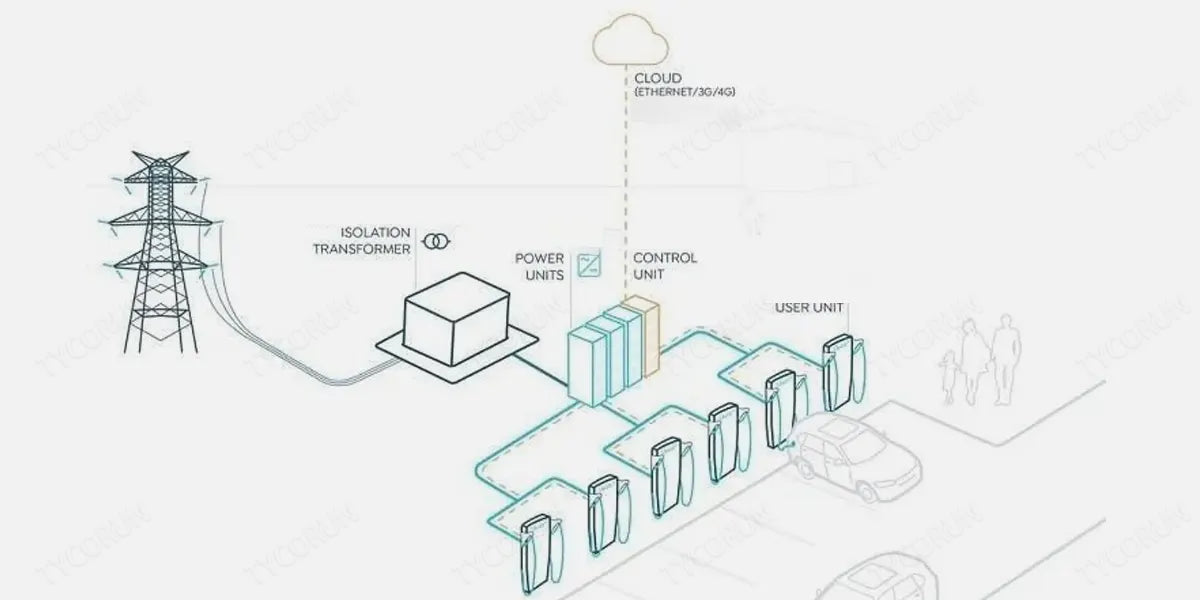
Advantages:
- The charging power can be very high. The high-power power module is placed in the cabinet. The cabinet can be far away from charging piles, cars and people. And it is not limited to the cabinet and can be expanded freely.
- Since the charging pile is not restricted by the charging cabinet, the shape of the charging pile can be changed freely. Each car company that builds its own energy supplement system has its own unique shape, and you can tell which company the charging pile is from at a glance.
Disadvantages: The cabinet must be placed independently and requires a large space.
③ PV-ESS
The structure is basically the same as the charging pile separated from cabinet. An additional energy storage cabinet is added. And it can also be equipped with photovoltaic and V2G charging piles. PV-ESS is a new trend in the charging pile industry. Since high-power fast charging has a great impact on the power grid at the moment of high power output, and there is usually a lot of idle and wasted capacity, it is very unfriendly to the power grid. Therefore, it is necessary to configure energy storage cabinets to reduce the impact on the power grid.
There are currently several options for PV-ESS:
- Storage and charging
Usually high-power charging piles need to be equipped with energy storage cabinets to reduce the impact on the power grid.
Taking the United States as an example, due to the marketization of electricity prices in the United States, there is a large gap between peak and valley of electricity prices. Therefore, the energy storage system stores electricity when electricity prices are low and outputs electricity at high points, which can minimize the impact on the power grid and alleviate the surge in demand.
Moreover, in addition to general electricity charges, electricity prices in the United States also adopt demand charges. Users that consume the same power will receive different electricity bills due to different power consumption methods.
What are demand charges?
The power company will intercept the highest peak of electricity consumption in a day (usually 15 minutes) and charge punitive electricity bills.
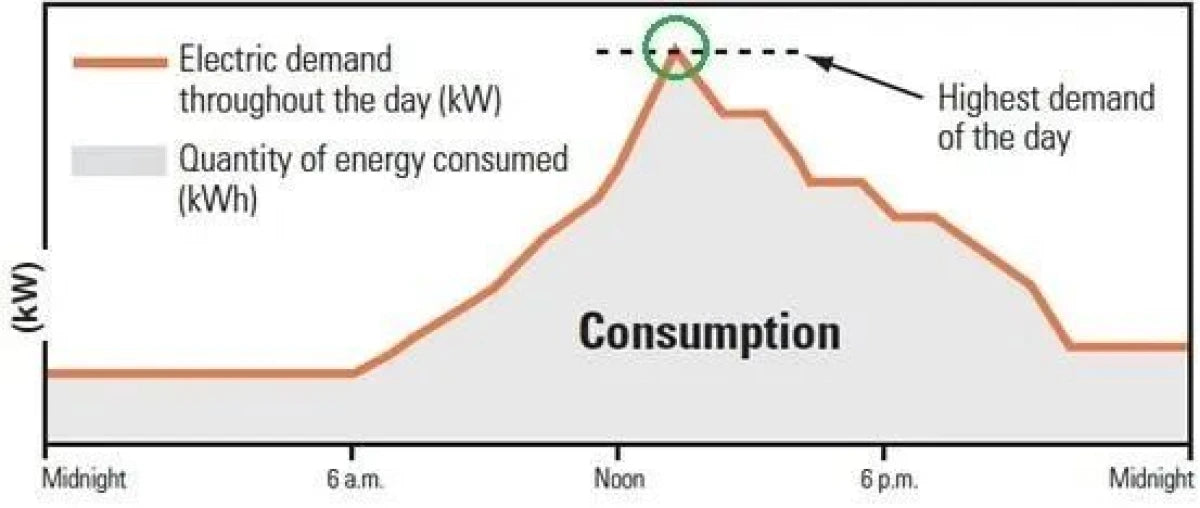
The demand charge is the maximum power used per unit time * demand charge (kW * demand charge), and the demand charge has a penalty nature, which is dozens to hundreds of times the ordinary electricity price. Sometimes the demand charge accounts for more than half of the electricity bill.
That is, the more extreme the peak value, the higher the electricity bill. Charging piles are a typical example of peaks that fluctuate from high to low. In particular, the peaks of high-power charging piles are often extremely high and will be heavily punished by demand fees.
Therefore, charging service companies in the United States have a strong incentive to install energy storage. After all, the number on the electricity bill cannot be underestimated. If site conditions permit, photovoltaics could be installed. This is the second form - photovoltaic storage and charging.
- Photovoltaic storage and charging
At present, most integrated photovoltaic storage and charging stations use parking sheds to arrange photovoltaics, and the area that can be spread is limited. Affected by the laying area, local sunshine conditions and the number of charging piles installed, photovoltaic power generation accounts for about 5% to 10% of the total charging power. It is still far from being able to get rid of the power grid.
For integrated photovoltaic storage and charging stations with a small photovoltaic installation area, photovoltaics only play a role as auxiliary charging, and the significance is mainly at the concept of green energy.
- V2G + photovoltaic storage and charging
This is a further step forward in photovoltaic storage and charging, through which the electric vehicles are not only regarded as loads, but also as members of energy storage. They can be charged and discharged, which is the ideal ultimate form.
For example, SAIC Feifan has cooperated with Teld to set up a demonstration station. The off grid storage batteries here uses decommissioned batteries from electric vehicles, which is part of the cascade utilization of batteries. In order to protect the power battery, the power of V2G charging piles is not very high. The charging and discharging power of this station is 16.6 kW. The power of most V2G charging piles is similar to this, between 15 kW and 17 kW.
The biggest problem hindering the development of V2G is car owners’ anxiety about battery degradation. The battery pack is the most expensive component of electric vehicles. Many car owners are concerned about the battery degradation. As long as the battery is charged and discharged, there will be loss. The difference is that different battery systems have different levels of loss.
V2G needs to be charged and discharged to achieve peak shaving and valley filling. It discharges when peak shaving is needed and charges when valley filling is required. No matter what, it will definitely accelerate the aging of the battery and affect car battery life.
- Photovoltaic charging and replacement
The battery swap station is inherently equipped with energy storage properties, and the energy stored in photovoltaic charging and storage is replaced by the battery swapping station. The fastest-moving company in this regard is NIO.
In patent CN215663038U, photovoltaics have been combined with battery swapping stations. As mentioned earlier, installing photovoltaics in a carport does not generate enough electricity and can at most serve as an auxiliary charging function. The patent also proves this.
Photovoltaic power generation can be used in three ways:
A.Charging piles powered by both the grid and photovoltaics:
NIO is very clear that photovoltaics alone are not enough to support the charging needs of charging piles. The grid still needs power supply. This proves from the side that the power generated by photovoltaics in the carport is not much.
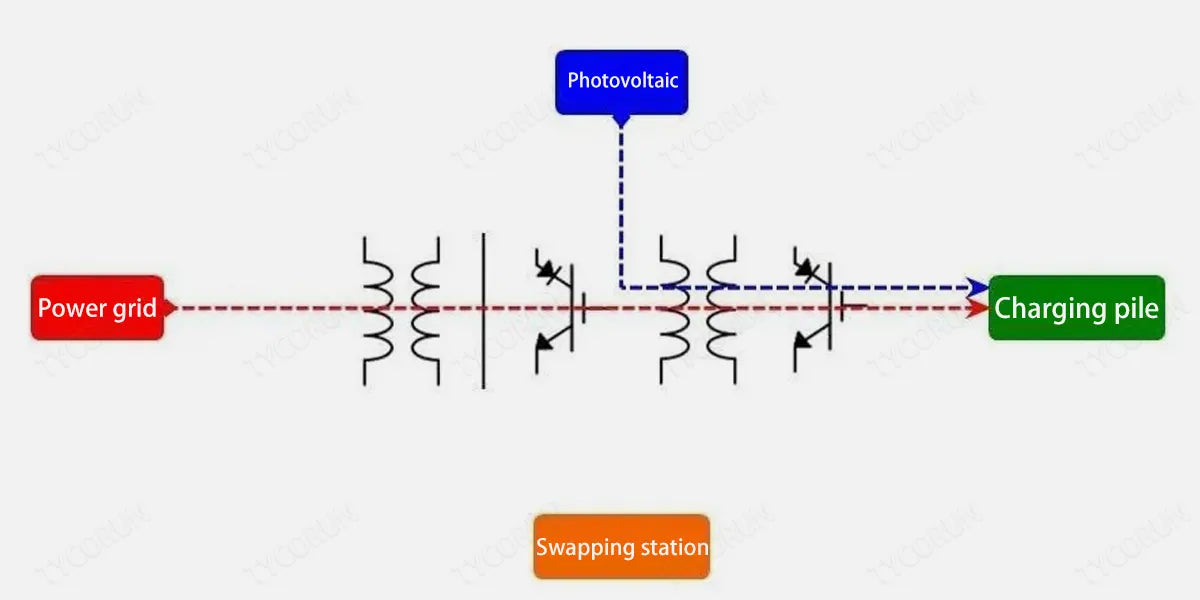
B.Photovoltaic power supply swap station (residual electricity storage):
Just like general energy storage stations can store photovoltaic power, the battery swapping station can also store photovoltaic power generation at the charging pile when no one is charging.

C. Photovoltaic grid connection (surplus power grid connection):
When neither charging piles nor battery swapping stations require excess power, photovoltaic power generation can be integrated into the grid to obtain power supply income from the power system.
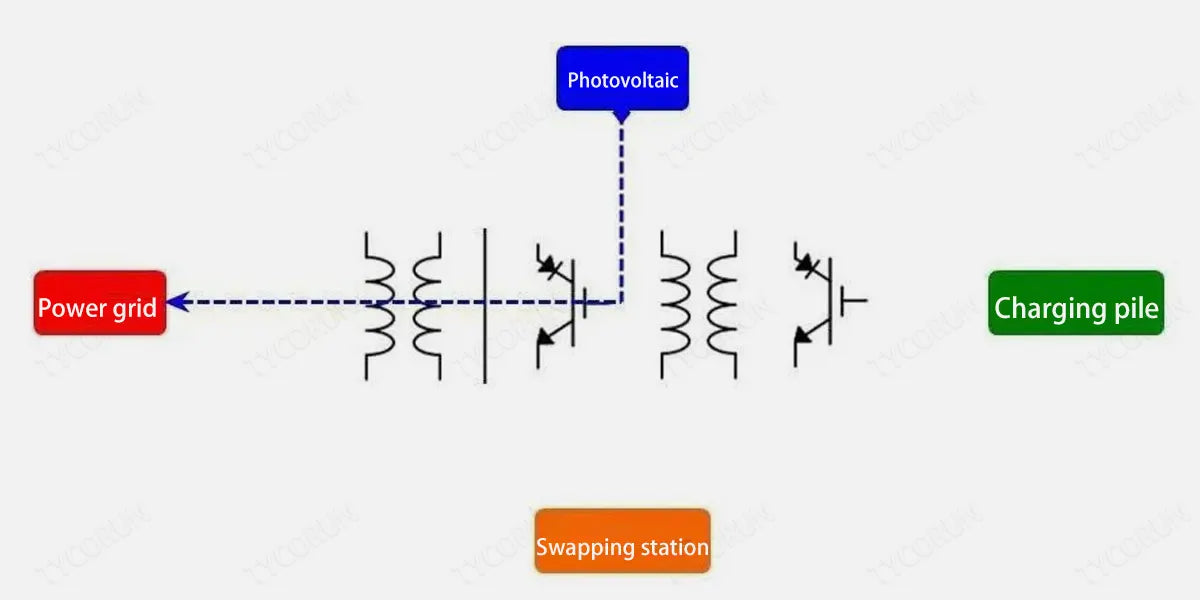
The difference from general energy storage is that the battery swap station usually does not discharge electricity from the battery swap station to the grid. The main reason is that when the power grid has peak load regulation demand, it is usually also the peak period of battery swapping. Battery swapping stations cannot take care of both at the same time and must give priority to the needs of car owners.
Shen Fei mentioned in the NIO Power Day in 2022: "Noon may be the time for everyone to eat and rest. Many users go to swap battery at this time. That is often the time when electricity prices are the most expensive. We will predict in advance how much energy will be consumed in that period. When users come to swap batteries, they should charge it to full capacity in advance when the price of flat electricity is not that expensive, and try to avoid battery fast charging during the most expensive period without delaying the next time when users come for battery swapping."
He also mentioned that NIO is currently testing a two-way battery swapping station, which discharges electricity to the power grid. He also mentioned that NIO accepts instructions and interacts with the power grid in seconds and minutes. This refers to frequency modulation requirements, which require seconds- and minute-level responses.
Peak shaving is to balance the power load by changing the power consumption (peak shaving and valley filling); frequency regulation refers to stabilizing the power frequency when the power system frequency deviates from 50Hz in China.
Frequency regulation needs to cooperate with the automatic power generation control AGC of the power grid, follow the instructions issued by the power dispatching agency, and adjust the power generation in real time according to the adjustment rate to meet the frequency requirements of the power system.
The performance indicator of frequency modulation is a weighted average of three indicators: response speed, adjustment rate and response accuracy. This indicator is the basis for frequency modulation scheduling compensation and will directly affect revenue.
Compared with thermal power, LFP battery energy storage can achieve rapid response and precise adjustment in this aspect, and is very suitable for frequency regulation auxiliary services. Therefore, NIO’s battery swapping station focuses on frequency regulation rather than peak regulation.
Related posts: energy storage vs car battery, car battery safety, lithium ion battery degradation